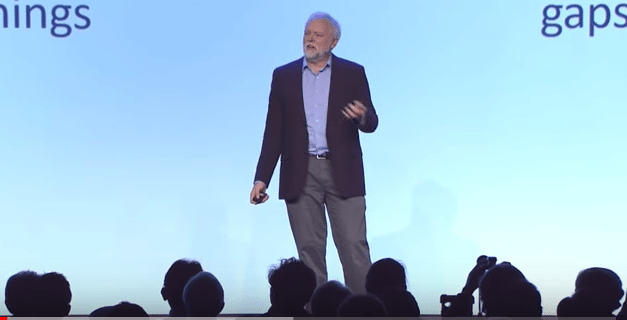Director of Technology at Arm discusses what is required in a world of a trillion IoT devices
Santa Clara, Cali. – Since Arm, a multinational semiconductor and software design company, was acquired by SoftBank for $32 billion last year, the business has stated it intends to design chips that will help put a trillion devices online by 2035. To make this vision a reality, Fellow and Director of Technology at Arm Rob Aitken highlighted four crucial elements IoT devices need during a keynote presentation at Arm TechCon 2017: the ability to work separately, together, automatically and resiliently.
Separate
By working separately, Aitken said individual devices must be capable of performing a useful function. A sensor must be capable of sensing temperature just as a camera must be capable of taking pictures. If these devices can neither perform functions nor are cost effective, no one will purchase them and there will be no reason to connect them. Therefore, in designing these devices, Aitken said designers must keep functionally and energy consumption in mind.
“When you think about the energy required to operate a sensor, there’s not a lot. Whether it’s a battery or a harvester or whatever, you have to go through this list of constraints and deal with all of them. You have to think about the application program software layer, you also have to think about the process technology, and you have to think about libraries and work your way up. All of these things matter,” he said.
Subscribe now to get the daily newsletter from RCR Wireless News
Together
In addition to working together, Aitken said devices must be able to communicate with each other and the cloud to make best use of collected data. “The key point here is we are dealing with this massive amount of data but there’s really not much information. Can we do this processing locally? Can we minimize the communication and help these things work together better?”
Automatic
The internet also needs to be able to work automatically, Aitken said. He drew reference to image recognition in which a device is trained to determine what an object is based on the context of a photo. The majority of these systems are dependent on data that is being transmitted to the cloud. However, some image recognition is basic enough that the camera can decipher the nature of the object on its own. “There is an objective answer but that answer is context dependent. But again, the point is this kind of automation can be applied through this IoT system and that will allow us to gain volume, gain scale and make progress.”
Resilience
Speaking on resilience, Aitken said it is important that the internet be able to respond to problems, especially when failure can result in catastrophic consequences. “If we have safety critical items like tools, locks, power, you know, and so on, all of these things need to be designed resiliently, they need to accommodate not just security issues. They need to accommodate failures, they need to accommodate wear out and so on. So the resilience has to built in throughout the system,” he said.
